Ipoh is a popular tourist destination in Malaysia. As the capital of the state of Perak, it benefited from the state’s tin mining industry making it, at one point, perhaps one of the richest cities in British Malaya. The wealth of the city saw it replacing Taiping as Perak’s capital, and also saw the development of a splendid example of a colonial town with Straits architecture and a variety of prominent colonial landmarks.
The city went into decline following the collapse of the tin mining industry in the 1970s, the effects of which can still be seen today in some areas . The trend of decline was later reversed by an increase in tourism that saw the city being revitalised – while Ipoh has always been famous for its food, these days it is drawing the hip crowd.
Or in blunt terms, Ipoh is in the midst of being gentrified.
I had a long weekend in September and with nothing to do, I made plans to take a daytrip to Ipoh. While day trips in Malaysia typically involve a car, Ipoh rather fortuitously lies on the Malayan rail network , and is connected by 18 services per direction a day from Kuala Lumpur via KTMB’s ETS service. With a travel time of 3 hours-ish, it was a pretty doable trip to make.
First posted 28 September 2019. Updated 30 January 2023.
Booking my ticket
The ETS service to Ipoh is actually KTMB’s first – The Ipoh service was the first to be launched in 2010, and the 3 hours travel time has improved access to Ipoh tremendously. It now gave people the option of working in Kuala Lumpur but at the same time being able to travel back to Ipoh on the weekends regularly. Ipoh is also KTMB’s 2nd most popular ETS destination, serving just over 630,000 passengers in 2018. I’d previously taken the ETS from Ipoh, so this was simply the mirror of that previous trip.
Ticketing was done via KTMB’s website. The experience was miles ahead from what it was 3 years ago, but still was rather finicky especially compared to the new KITS system installed in 2022. I painlessly bought myself a ticket for the 09:00 am ETS Gold departure from KL Sentral, and I was all set.
The ETS Gold services are (usually) Standard Class only.
Departure experience at KL Sentral
Boarding took place at the Intercity gates at KL Sentral, where the crowd provided excellent examples of why KL Sentral isn’t really ready to handle bigger intercity passenger numbers.
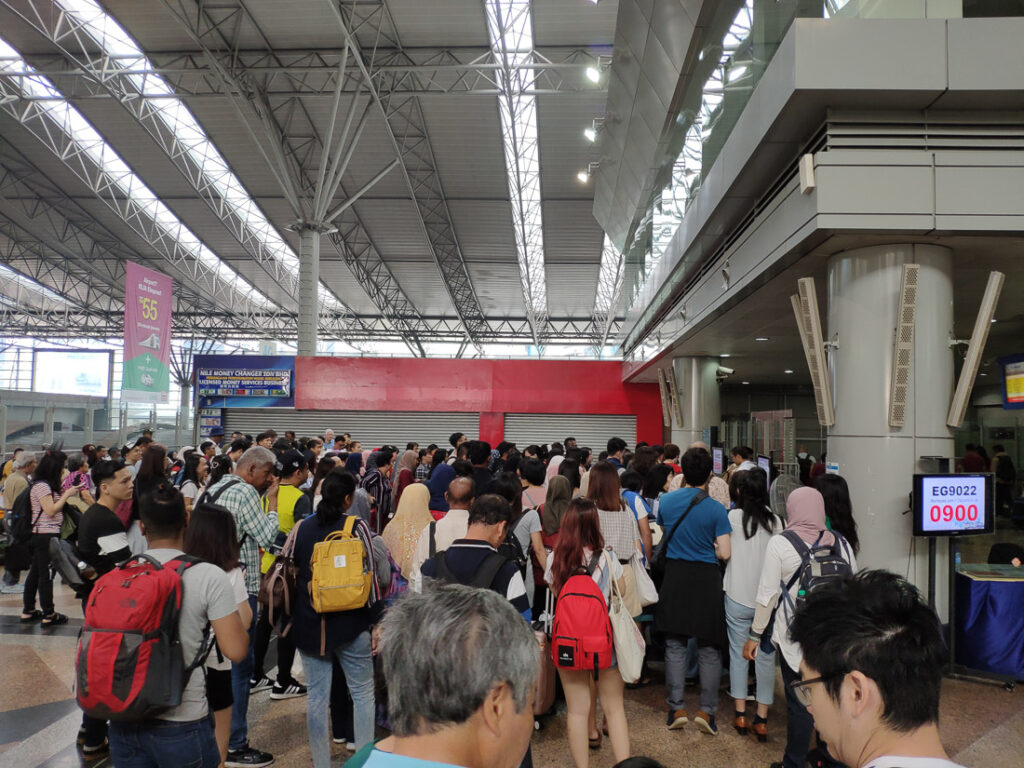
Ticket checks were performed manually by staff, mainly to ensure that the incoming passengers were boarding the correct train, no doubt to prevent the passenger heading for Gemas ending up in Ipoh instead. Interestingly, the staff checking the tickets were wearing DMIA uniforms instead of the KTMB ones. (DMIA is the firm contracted to upgrade and renew the Klang Valley mainline)
Down the escalator..
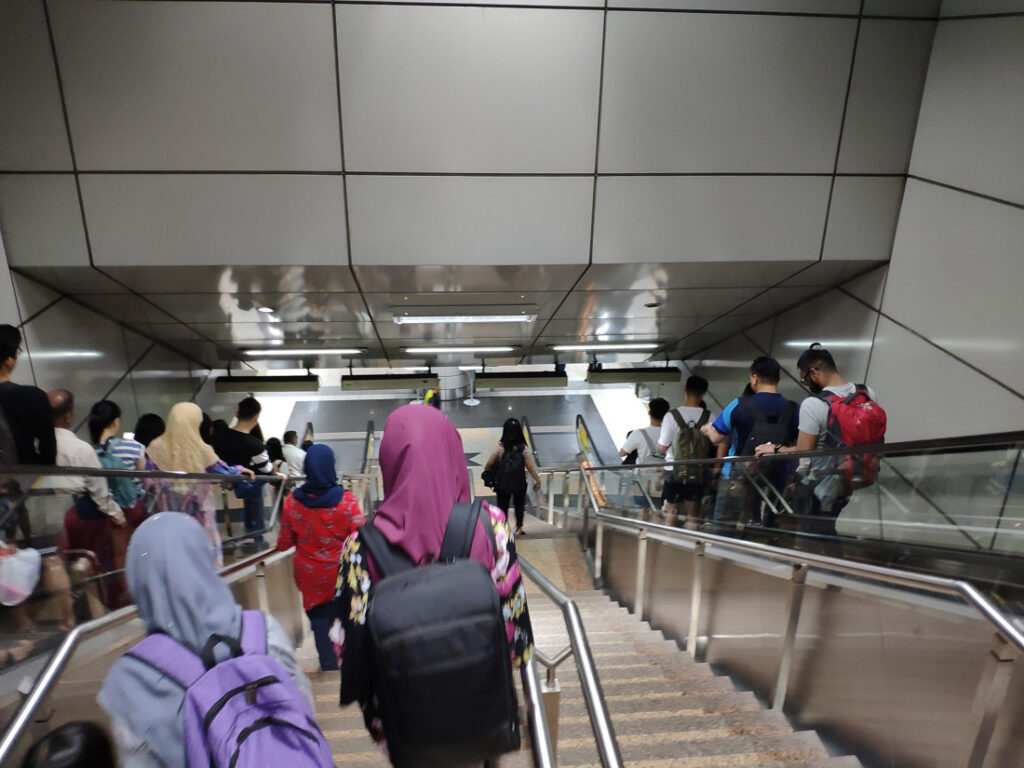
… and I was greeted with a pleasant sight in the form of a polished stainless steel train-body.
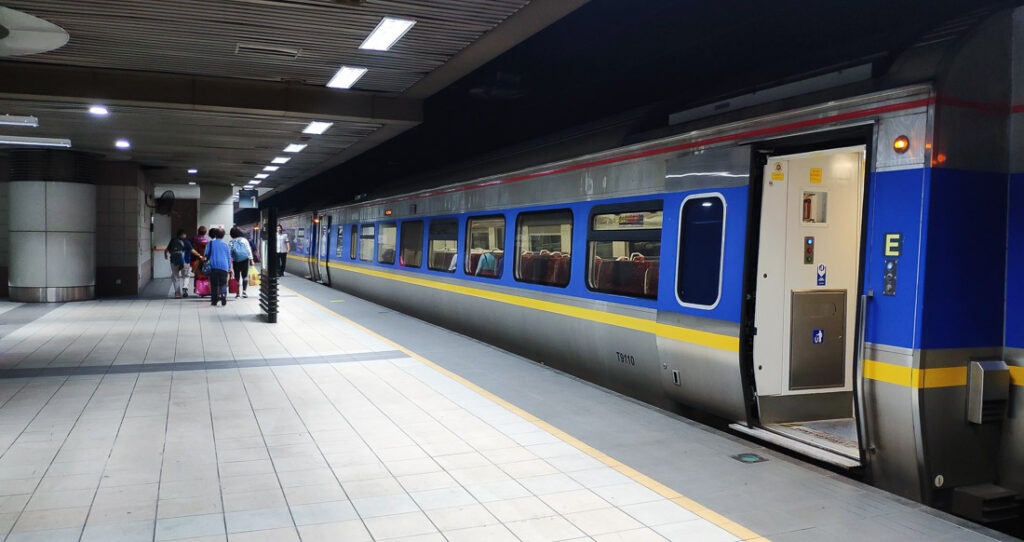
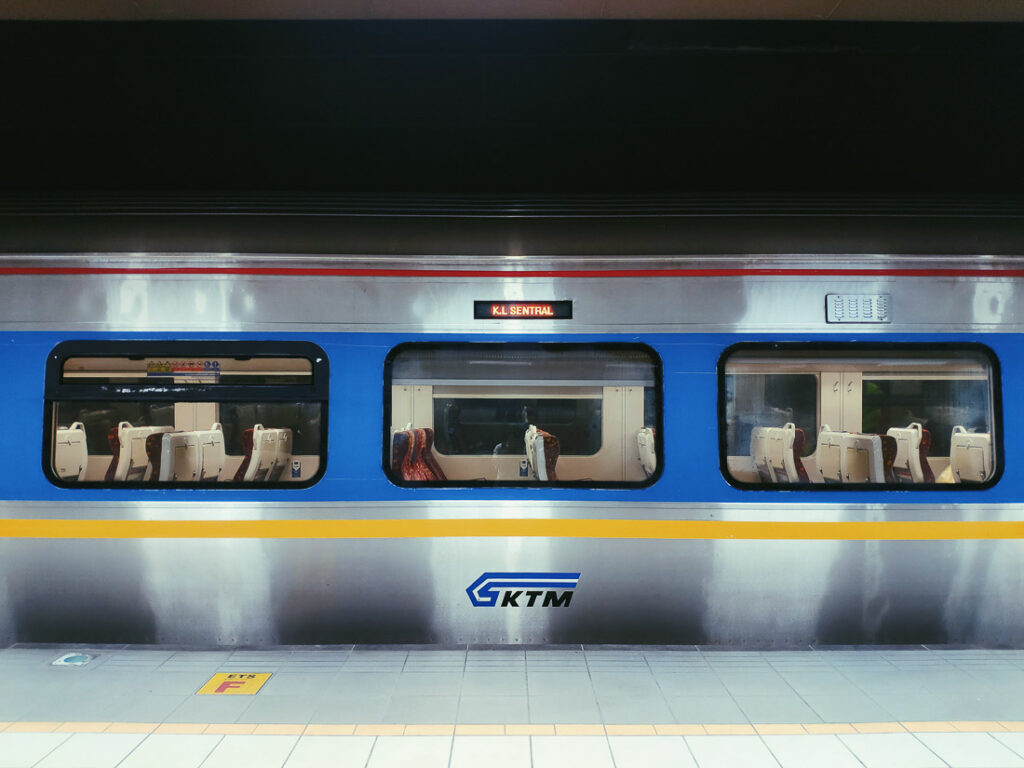
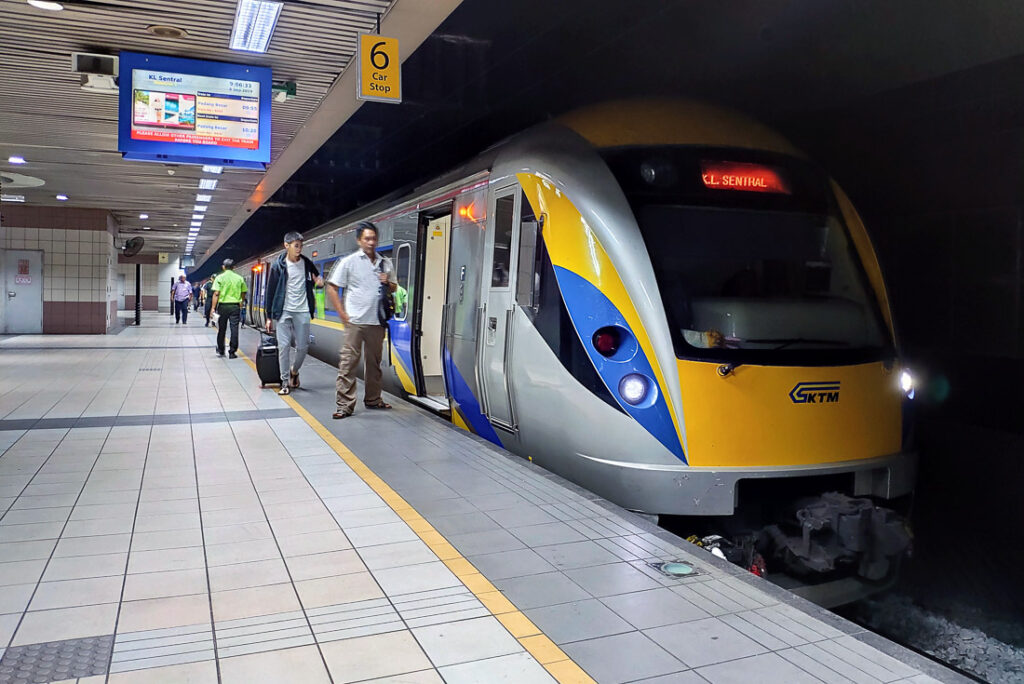
That’s another tick on the proverbial list: I finally caught the KTMB Class 91, the sister-type to Irish Rail’s Class 22000.
We were seated in Coach F, located right at the front in the direction of Ipoh. I was hoping our seats were forward facing, but they turned out to be rear-facing, since KTMB’s seat selection page do not actually identify the directions.

With the passengers settled in, the doors closed, and we pulled away from KL Sentral on time. That’s the thing about KTMB services: departures are usually on time, but more often than not it gets delayed halfway.
Cabin & Onboard Amenities
I paid particular attention to the onboard experience this time around, as this Class 91 set was a departure from the usual norm of Class 93 trainsets. The Class 91 sets were actually the very first trains put into service for the ETS services between KL and Ipoh, at a time when electric intercity services were still a new concept in the country; Not to mention that I also wanted to see if it measured up to their Irish cousins.
The Standard Class seats
The seats were actually more comfortable than the Class 93 seats, feeling more like actual couches with a proper seatback rather than the narrow ones found on the Class 93. They won’t score very high for lumbar support, however, but my back had less of an ache after the trip; Although I must point out the lack of a centre armrest that could be annoying if you were sat next to a stranger.
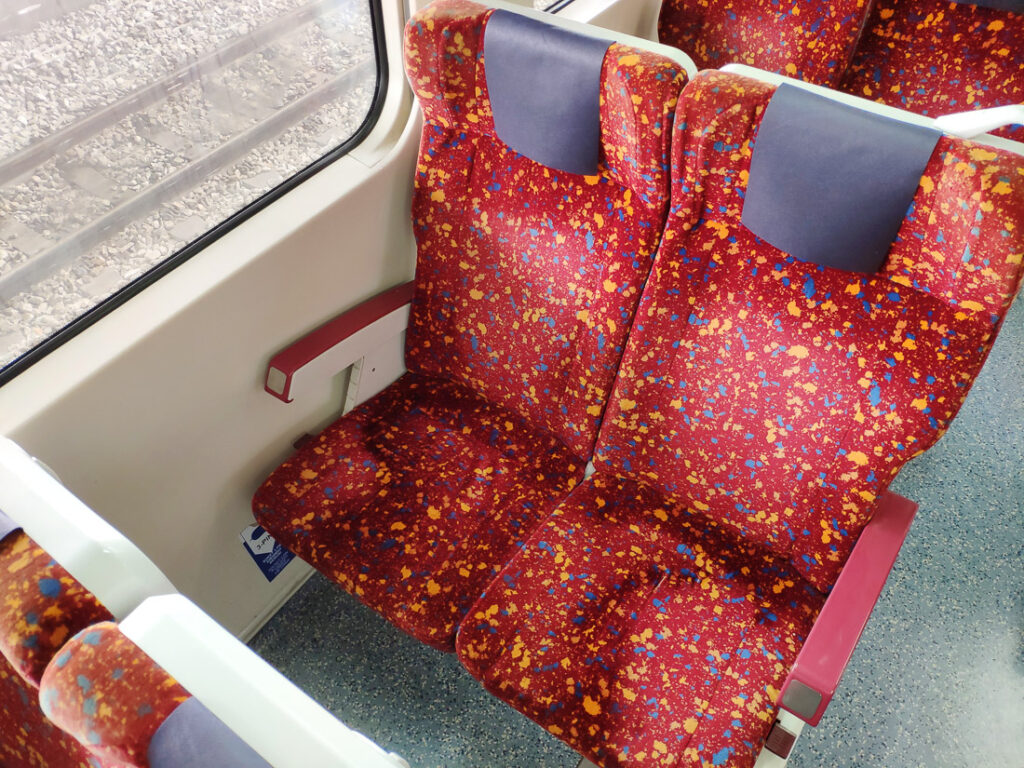
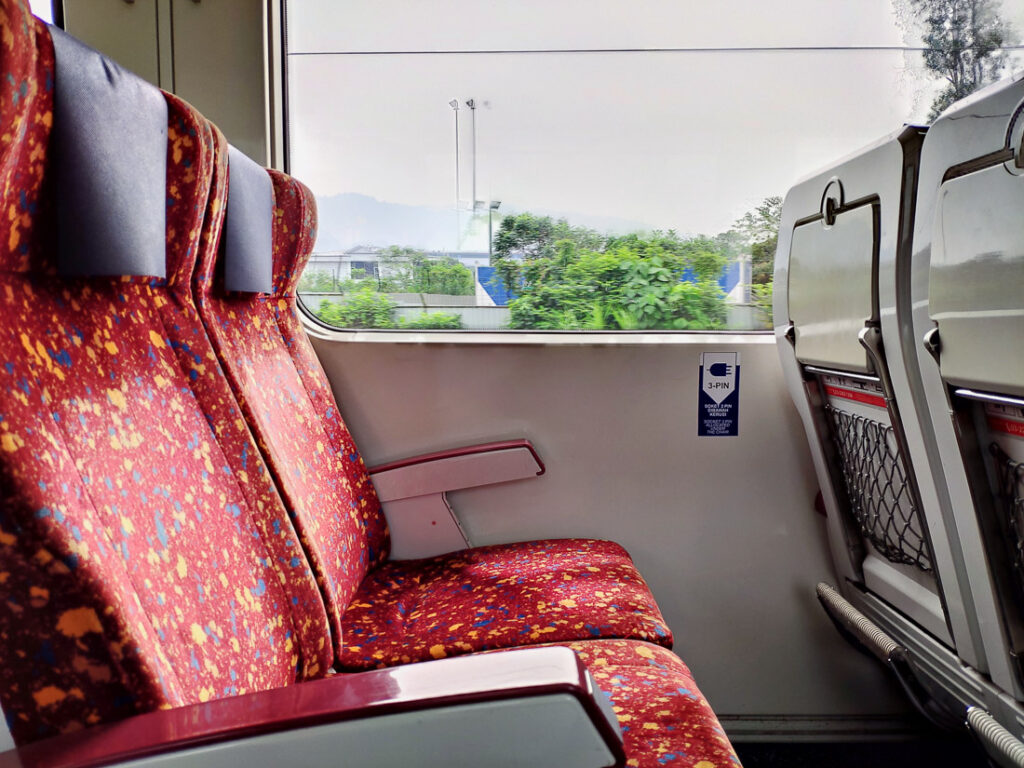
The tray tables on the seatbacks were pretty decently sized. Most importantly they were bigger and more usable than those on the Class 93, while remaining within the realm of sanity unlike the giant table on the Irish Rail Mark 4 sets. Still, it depends on how what you’re using the table for, as while one of KTMB’s packed meals fitted comfortably it was cutting it a wee bit close.

Onboard Amenities – The Toilets
The onboard toilets were clean, although it was already a little bit wet by the time I got to have a look. The design appeared to be more bare-bones than the Class 93 ones, as while there was an integrated soap dispenser, there was no integrated hand towels dispenser. This meant less parts to maintain, and it might also make more sense operationally to stop including integrated soap dispensers as on both train sets KTMB had provided standalone soap bottles instead; Hand towels are not provided in the toilets either on both train sets.
The sinks on the Class 91 are rather small however, and the bottle of soap appeared to be perched precariously by the edge.
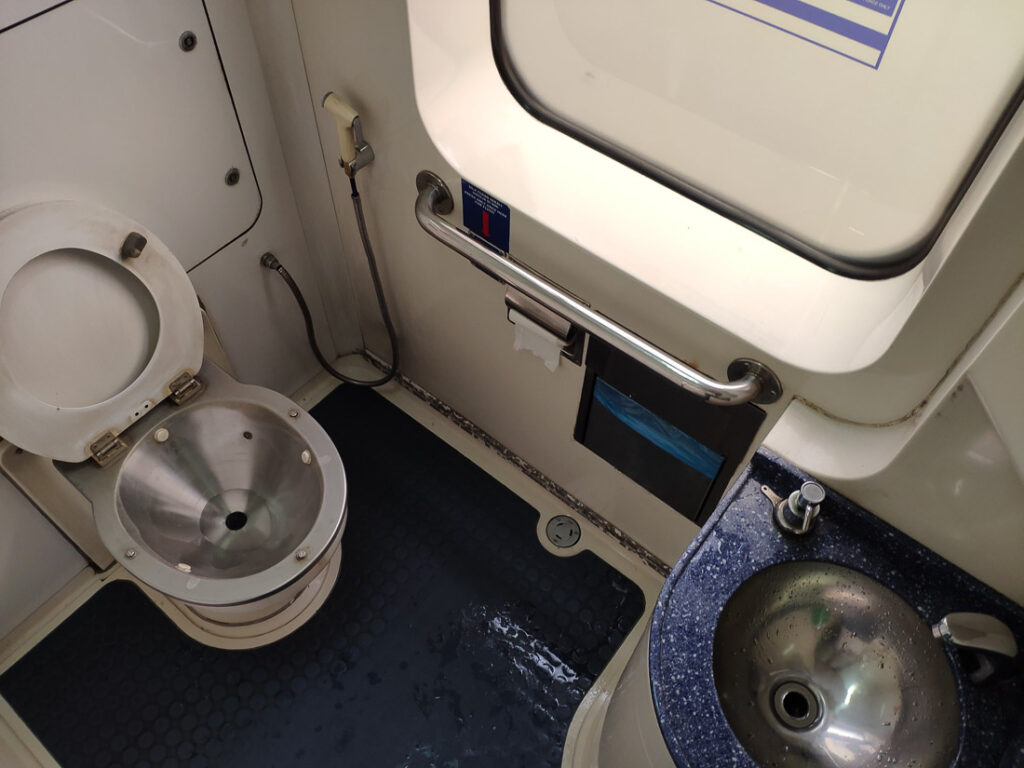
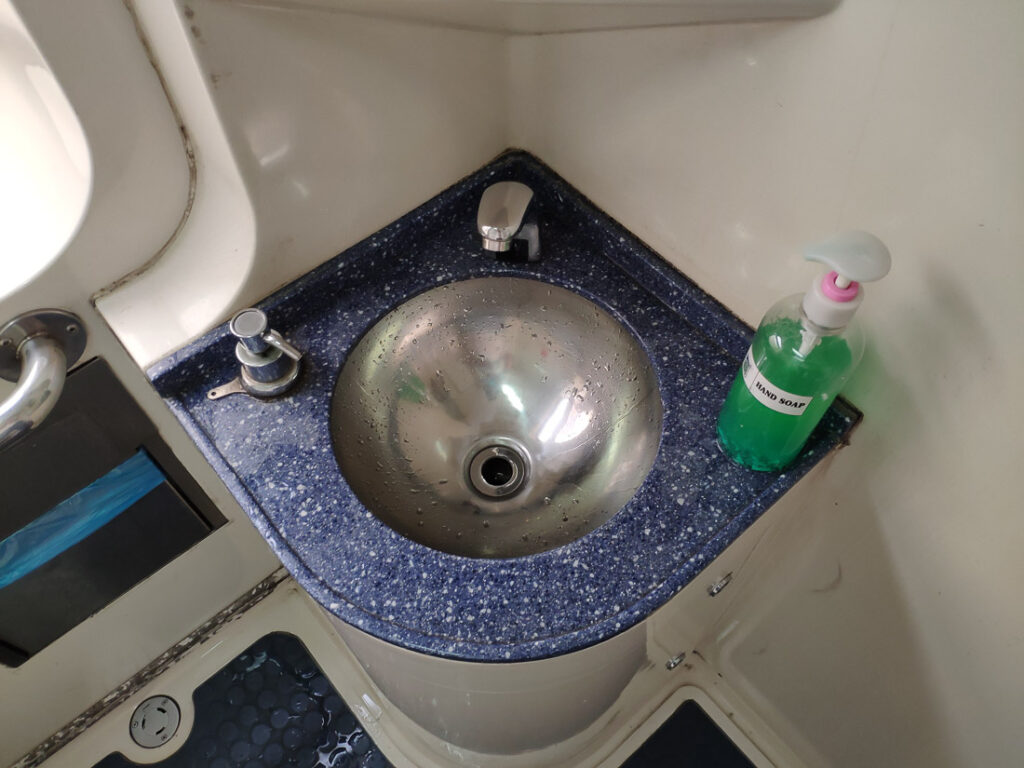
I’m not a fan of the lack of hand towels, but I can certainly see the difficulties with disposal should hand towels be made available to passengers.
Onboard catering
I’ve previously covered KTMB’s onboard catering here and here. The rundown is that the food could be improved, and at the same time it is also a matter of ordering the right selection of food.
On this particular journey me and my travel partner sampled the food offerings on the return trip which coincided with dinner time. I had the Nasi Tomato that had some chicken with it, and she had the fried bihun. The bihun was reportedly dry and not very enjoyable, while I found my Nasi Tomato to be…lacking in flavour. Of course, given that both were microwaved-meals some allowances should perhaps be given for the loss of flavour, but is it really too much to ask for KTMB to hire a better caterer?
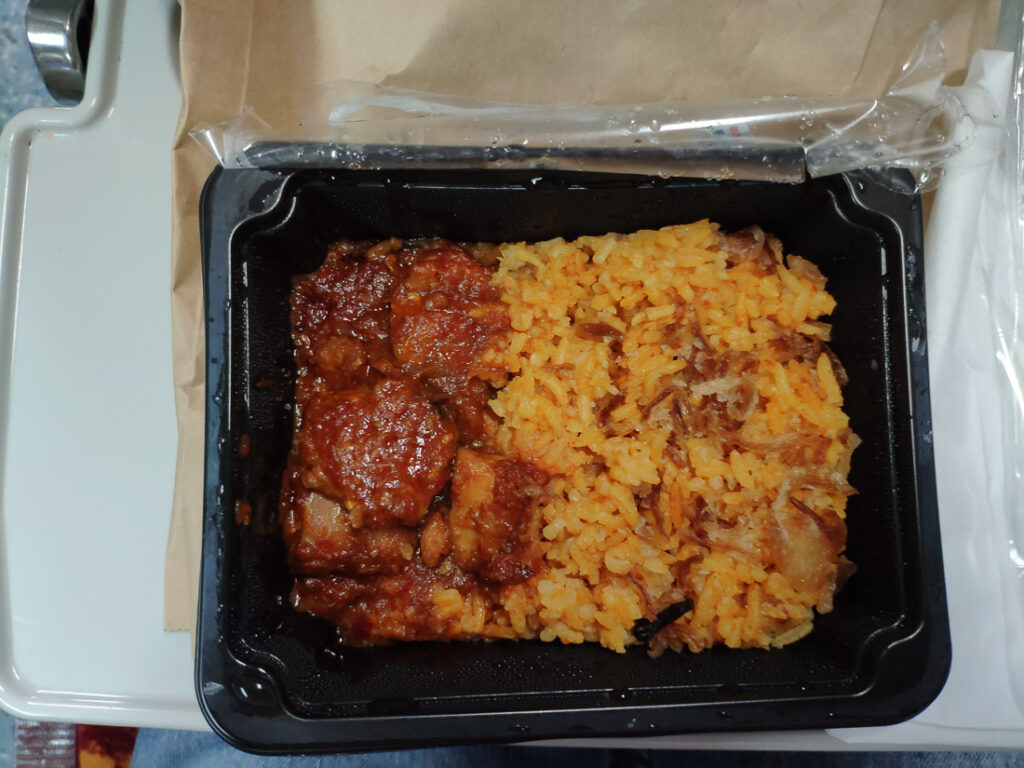

If you do want to have a go at the onboard food, just stick with their lasagna. Its the one dish they have that works best microwaved and is apparently quite popular too, since they’d ran out of supplies on the return journey.
In terms of dining experience the ETS trains won’t score very high either. Both the Class 91 and 93 sets feature a rather cramped bistro corner rather than a full dining coach. On the Class 93 the counter is better designed and equipped than the Class 91’s, but the Class 91 features a bench and table running parallel to the carriage walls, making it possible for you to eat and enjoy the view at the same time. This is better than the Class 93’s perpendicular setup with some rather uncomfortable benches.
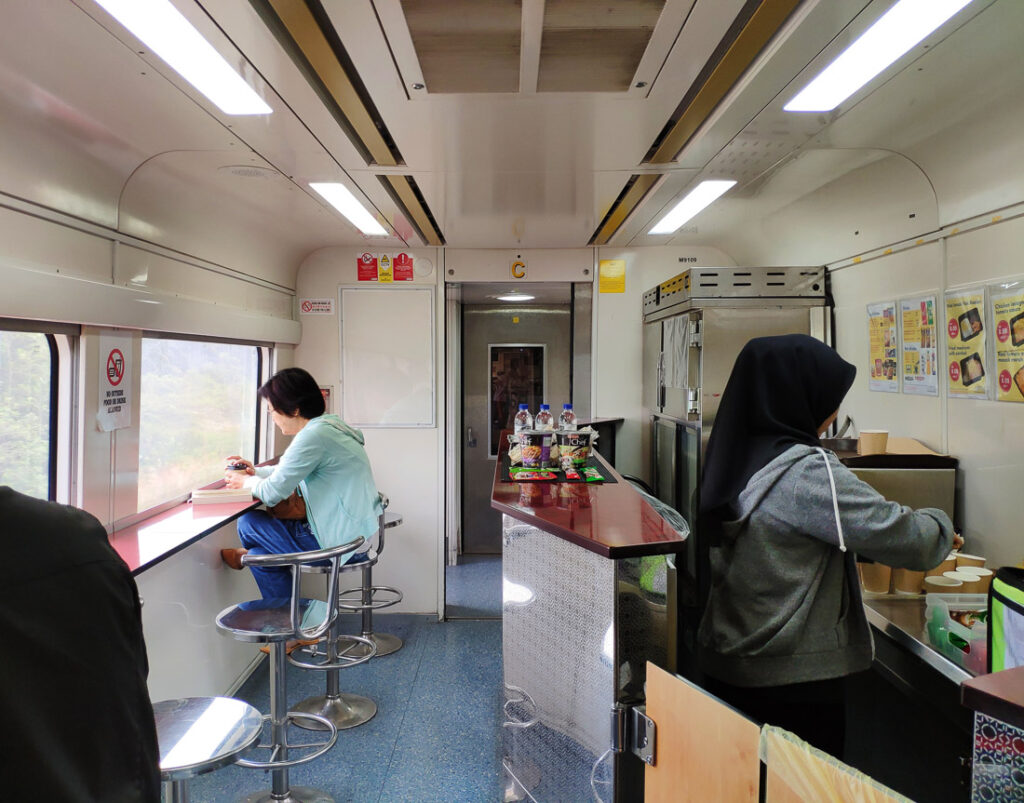
Still, with a dining concept that is basically taking your food back to your seat, the dining experience is something that can be given a miss. If you’re heading to or from KL Sentral, just grab a McDonald’s. If you do insist on having a go at KTMB’s food offerings, then I would suggest the Lasagna or the instant noodles.
Arrival at Ipoh
Ultimately the journey turned out to be what it was supposed to be: a milk run. We departed KL on time and arrived at Ipoh on time with healthy passenger loads. It was quite enjoyable and it certainly was fuss free. Not that there was a need to spice up the service offerings to extravagant levels due to the short journey times, though I must reiterate on the need for better catering options.
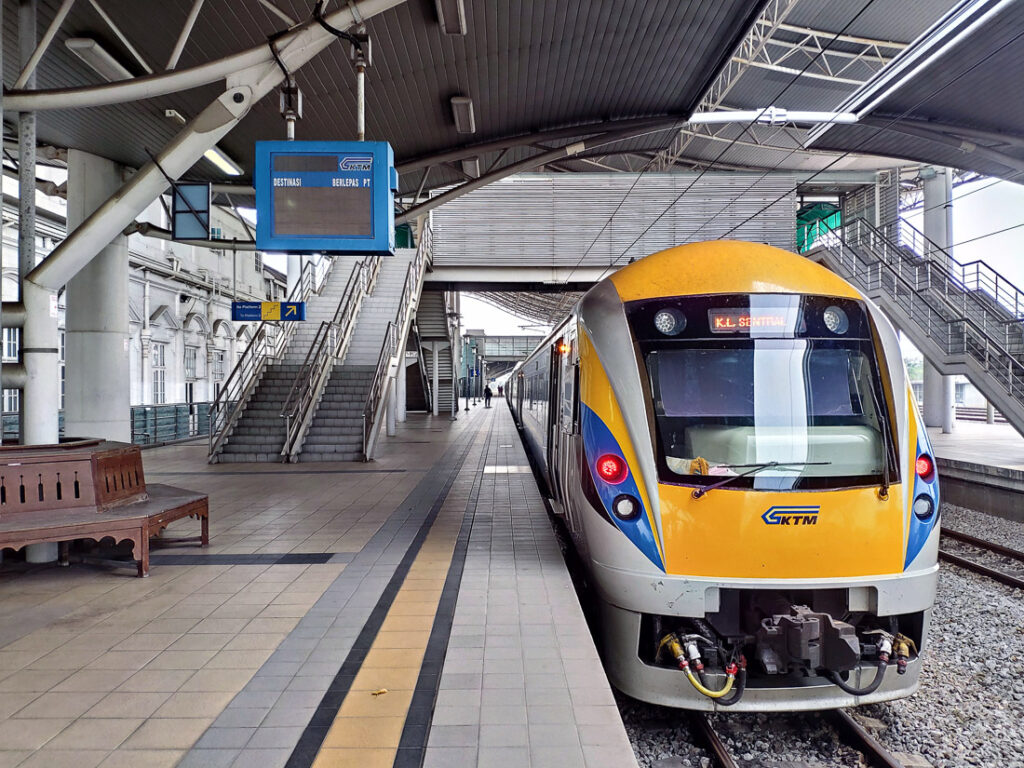
Commentary – Quality, and Maintenance Issues
The Class 91s were a very welcome change from the Class 93 monotony. Unlike its Chinese counterparts the interior fittings were slightly more barebones, but also featured better quality. Door handles felt more solid, and the doors between the carriages certainly weren’t rattling their hinges off; The wall panels also had a mild beige colour that gave the interior ambience a nice warm tone, which again is a welcome change from the Class 93’s harsh fluorescent tones, though in the long run I suppose beige tones would age fast–Indeed it did feel rather lethargic at some point.
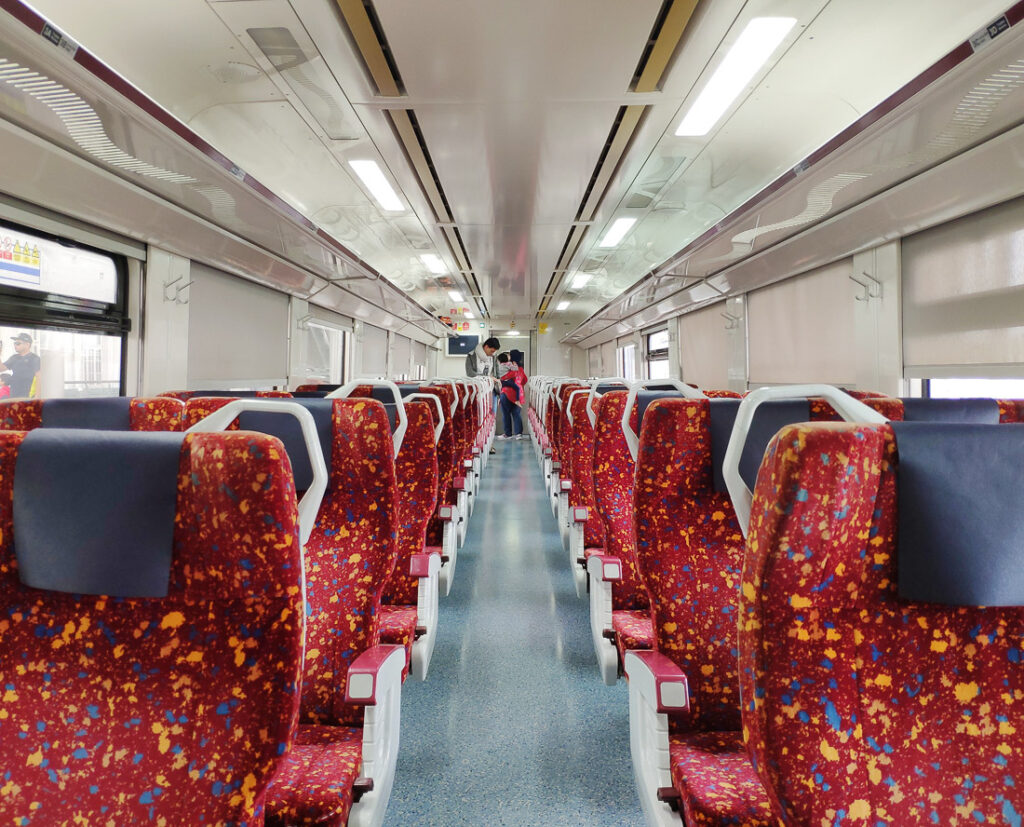

I didn’t like everything on the Class 91, however. A particular pet peeve are the heavy sliding doors between carriages. The norm found on other intercity sets worldwide and the Class 93 is to push a button and the gangway doors will open automatically. The Class 91 doors, however, require to pull a lever and then push the doors manually, followed by walking through a short dark gangway reminiscent of older times. I certainly don’t mind the darkened gangway, but operating the doors are a hassle if your hands were full with, say, hot drinks for example, or if you were an elderly passenger. Something for the refurbishments down the line, perhaps?
There was also a the matter of shattered outer glass panels and malfunctioning doors. I’ll just leave the pictures below to do the talking –



In terms of onboard experience, these trains certainly don’t match up to their Irish cousins, unfortunately, with Irish Rail taking far better care of their trains than KTMB does.
Final thoughts
This was yet another routine ride on the ETS. At 3 hours it is a usable way to commute between Ipoh and KL for day trips, especially since the station is right next to the town centre unlike the rather distant Amanjaya bus terminal. Despite it flaws the service performs its basic function well. But as I’ve said before, it is a basic intercity service, and KTMB would do well to start imposing higher standards in its product offerings.
And change the caterers, please.
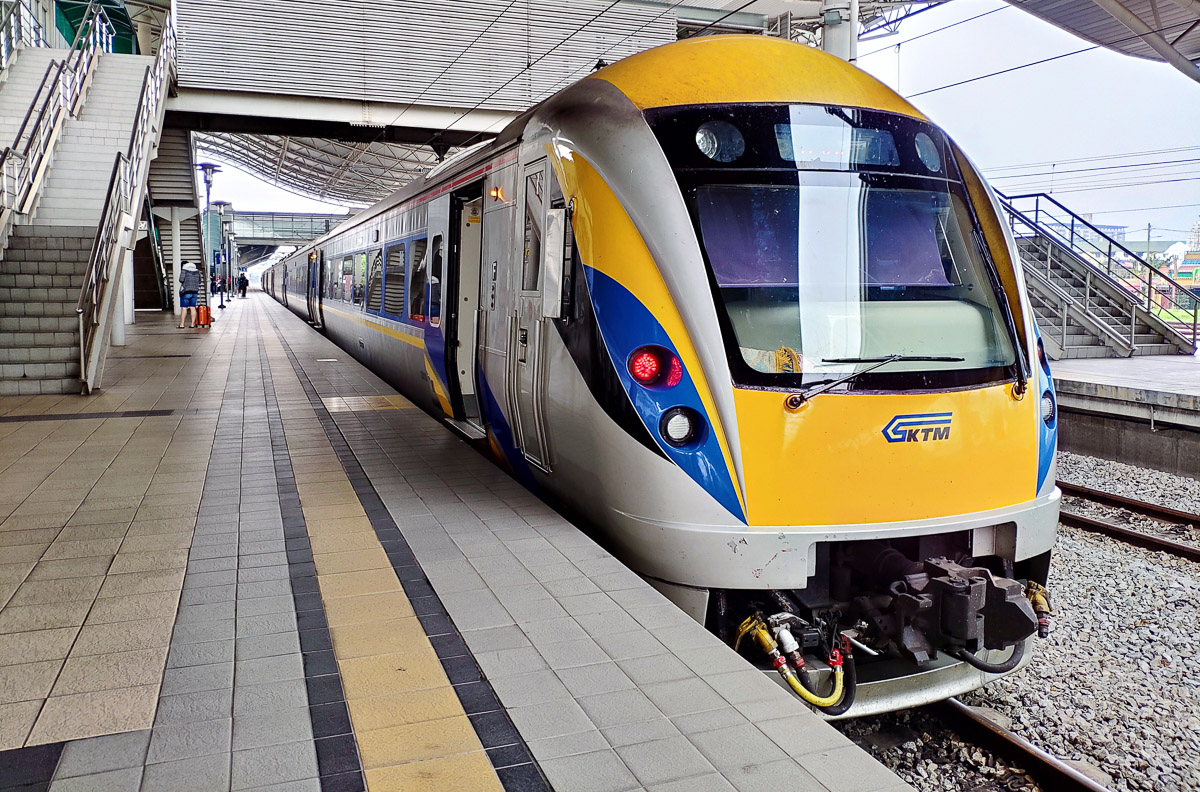
Leave a Reply